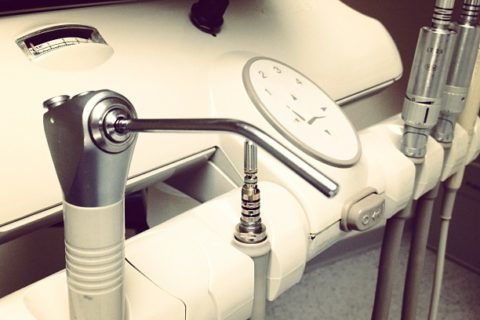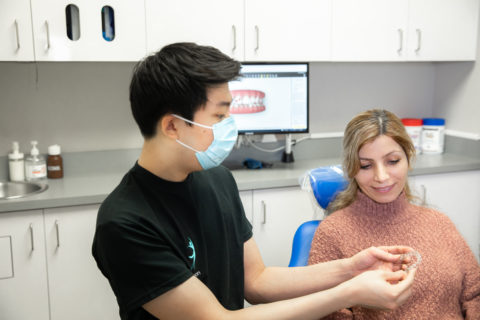
Bone Grafting
We use this surgical procedure to transplanted real or synthetic bone to into and area to repair and rebuild diseased or damaged bone.
Call us today!
(365) 659-4701
Facebook
facebook.com/markhamdentalhw/
Instagram
instagram.com/markhamdental/
Very professional and friendly staff, makes sure your teeth are in perfect health, using the latest dental technology for your teeth.
— Matthew Chen
In Case of a Dental Emergency Call
(365) 659-4701
Please remember we care about your privacy.
Bone grafting in Markham is a common surgical procedure where we transplant synthetic or real material to rebuild or repair damaged or diseased bone. This is necessary when there’s been bone loss in the jaw. This process is specifically designed to add density and volume in areas where bone loss has occurred.
The material itself may come from your own body or from human tissue or an animal bank. In some situations, a synthetic material can be used.
This is an extremely common treatment. It can be performed by either a specialist or general dentistry professional. There are several different types of bone grafts.
- Periodontal. Bone that supports your teeth can be eroded away by gum disease. As a result, your teeth can become loose. This type of bone graft is done around a loose molar to supply additional support.
- Bone Grafts To Preserve Sockets. This procedure can also be called ridge preservation. It’s done immediately after an extraction to fill the void in. These grafts prevent the socket from caving in.
- A Sinus Lift. Your sinuses are located in the cavity just above your back teeth. They can drop down when back teeth are missing. They can actually occupy the space where the tooth roots once sat. In this situation, it’s impossible to place dental implants because they would impact on a sinus membrane. The solution is what’s called a sinus lift with a dental bone graft that sits underneath .
Understanding who has the best chance of success is important.
Bone Grafting In Markham: The Best Candidates
There are some common reasons for this. They include:
- People who have been affected by bone loss. This can give the appearance of the face looking shorter when the bone is lost in the jaw. That’s because the jawbone appears to protrude forward.
- Patients who suffer from gum disease are also excellent candidates. For example, bacterial infections can cause gingivitis which is an inflammation of the gums. If left untreated, it can become periodontitis which is a more serious infection. When gum disease gets a good hold, it can start to deteriorate the bone mass in the jaw. A combination of bone grafting in Markham and gum disease treatments helps.
People who are about to receive dental implants are also excellent candidates for bone grafts. These implants are artificial roots that are shaped like screws. They need to be placed into a healthy jawbone so a crown can be attached. Bone grafting is quite often necessary to make sure the base is strong enough.
How Does Bone Grafting In Markham Work?
An oral examination to check on the health of your teeth of your gums is the first step. Scans and/or dental x-rays are used to see if there’s any bone loss.
Discussing your treatment options comes next. One of our dentists will discuss these with you and come up with an individualized treatment program.
Numbing The Area
The first part of the procedure involves numbing the area with a topical anesthetic. The jawbone needs to be visible. To that end, a small incision is made in your gums and the area is then disinfected and cleaned.
The bone grafting material is added next. A membrane might be used to add additional protection. Once the gum tissue has been put back into position, sutures close the incision.
Is There A Lot Of Pain?
When there’s no need to harvest bone material from other parts of the patient’s body, this is a relatively minor procedure. Patients are sedated. That means they won’t feel any discomfort until after the anesthesia wears off. Over-the-counter pain relievers usually make any pain tolerable over the next few days.
Stronger pain medications might also be prescribed. The amount of discomfort usually depends on how much work is being done. There can be some minor pain during the recovery process which can take several weeks.
What About After The Bone Grafting in Markham Process ?
After the procedure, a gauze gets packed around the incision. We supply detailed instructions about changing the bandages over the next day. Usually, our team also prescribes antibiotics to fight off any looming infections. You might also be given a pain reliever prescription.
Here are a few other postoperative tips to follow during the initial recovery period:
- For the first 24 to 48 hours, ice packs will help reduce any swelling and pain.
- Your menu will need to change for several days. Bland soft foods are best.
- For the first night or two, sleep with your head slightly elevated. That prevents blood from pooling near the incision site.
Here’s a few other things that you should avoid for the first few days of recovery:
- Coffee , soup and other hot liquids.
- Any kind of contact sports that could put your incision at risk.
- Crunchy hard foods like almonds and peanuts.
After about a week, the dull ache some patients experience is replaced by a mild discomfort. After only a few weeks, your jaw will feel normal again.
However, it might take several months before the bone is strong enough for dental implants. During this time, you will need to come in for several visits and at least one set of x-rays. Checking on the healing process as things progress is important.
Common Mild Side Effects
There are some common mild side effects from a dental bone graft that can include swelling and pain. Over-the-counter pain relievers and ice packs can keep any discomfort to a minimum.
There are a few others that include difficulty speaking and chewing as well as some minor bleeding for several days afterwards.
This procedure is almost always well-tolerated and safe. However, with any surgical procedure infection can become a concern.
That’s why we always recommend our patients take the full course of antibiotics we prescribe after a bone grafting in Markham treatment. It’s important that you come in see us if you suffer from any lingering symptoms like pain persisting or worsening several days after the process.
Contact details
Markham Dental General and Cosmetic Dentistry
8241 Woodbine Ave, Unit 17, Markham, ON L3R 2P1
Email: [email protected]
In Case of Emergency Call
(365) 659-4701
To schedule an appointment, please fill out the adjacent form.
Book An Appointment

Book your appointment online!




